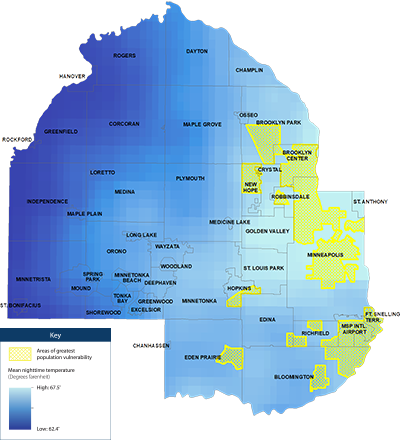Extreme heat and cold
Causes and trends
 Occurrences of daytime extreme heat are projected to increase by 2050. While a couple of degrees may not seem significant, increased temperatures combined with increases in precipitation will lead to increased humidity, compounding risks to residents with underlying health conditions.
Occurrences of daytime extreme heat are projected to increase by 2050. While a couple of degrees may not seem significant, increased temperatures combined with increases in precipitation will lead to increased humidity, compounding risks to residents with underlying health conditions.
Impacts and threats
Extreme heat, especially in urban areas, will disproportionately affect residents with underlying health conditions, especially those with limited means to adapt.
Who is more at risk
The capacity to respond to increasing temperatures determines whether heat is an inconvenience, a manageable problem, or a catastrophic event. For many residents, higher temperatures may translate only to higher utility bills resulting from increased use of air conditioning. But some residents may not have air conditioners or the ability to pay to run them and are more likely to have underlying health conditions that make lack of access to air conditioning a bigger problem.
Many cooling centers are not open overnight or are not reasonably available to those in need. This is problematic because the inability for the body to cool off, especially at night, exacerbates physical and mental health stressors.
This is especially true for residents living in urban areas. Many urban areas have more concrete and other impermeable surfaces that radiate heat along with less tree canopy and greenspace to mitigate the heat. This creates urban heat islands where the temperature measured can be significantly higher than the official reported temperature. The continued rise of temperatures due to climate change is likely worsening this heat island effect.
